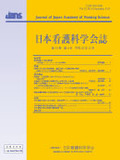Japanese
English
- 販売していません
- Abstract 文献概要
- 参考文献 Reference
要旨
目的:看護職のワークライフバランス(以下,WLB)とバーンアウトの関連を明らかにする.
方法:首都圏の一般病院で国,公的医療機関,社会保険関係団体,医療法人,会社の設置主体より各1施設選定した5病院に勤務する看護職1,030人を対象とし,自記式質問紙調査を実施した.調査内容はバーンアウト(日本版MBI-HSS)22項目,属性,看護職のWLB指標調査24項目とした.
結果:有効回答は798人(有効回答率77.5%)であった.平均年齢は33.8±8.1歳でWLBとバーンアウト総合得点の平均はそれぞれ10.2, 10.9であった.WLB総合得点は,会社が国,公的医療機関,社会保険関係団体,医療法人より有意に高かった(p<0.01).階層的重回帰分析を行った結果,実務職種,残業時間,子どもの有無,WLB認識,仕事と仕事以外の切り替え,目的を持って取り組んでいること,相談相手の有無,WLBとの有意な関連が認められた.
結論:設置主体別では,会社はWLBの実現度が高い可能性が明らかになった.また,仕事と仕事以外の切り替えや目標を持って取り組むこと,WLB実現度を上げることによりバーンアウトが予防できる可能性が示唆された.
Objectives: The objective of this study is to determine relationships between work life balance (WLB) and burnout of hospital nurses.
Methods: A self-rating questionnaire survey was conducted with 1,030 nurses who were working in five general hospitals. We selected one hospital from each of five management types; national medical institutions, public medical institutions, social insurance organizations, medical corporations, and general private companies. The questionnaire devoted 22 items to burnout (Japanese version of MBI-HSS) and 24 to demographic details and WLB indexes.
Results: Valid responses were obtained from 798 subjects (77.5%). The mean age was 33.8±8.1 years, and the average total scores of WLB and burnout were 10.2 and 10.9, respectively. The total score for WLB of nurses in the hospital managed by a private company was significantly higher than the other four (p<0.01). Results from hierarchal multiple linear regression analysis showed significant relationships between burnout and the following factors: occupation type, overtime, having children or not, awareness of WLB, switching on and off working hours, working with a clear purpose, having persons with whom they can consult, and WLB.
Conclusion: The results of the analysis by management type of hospital show that hospitals operated by companies have a good potential to realize WLB. It was also suggested that nurse burnout can be prevented by switching between working and off-work hours, making the effort with a clear purpose, and aiming to improve the level of WLB.
Copyright © 2014, Japan Academy of Nursing Science. All rights reserved.


